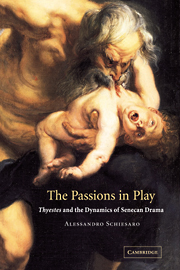Bibliography
Published online by Cambridge University Press: 22 September 2009
- Type
- Chapter
- Information
- The Passions in PlayThyestes and the Dynamics of Senecan Drama, pp. 256 - 268Publisher: Cambridge University PressPrint publication year: 2003



